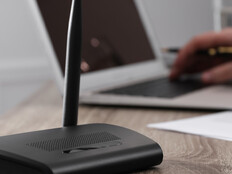Stipulations Range from Cost to Environmental Impact
Utilizing input from law enforcement, wireless and wireline telecommunications service providers, local governments and other stakeholders, the report will assess the possibility of establishing broadband access points on private and government-owned structures and property, private and public lands and buildings, and public rights of way.
The report will also include recommendations for accelerating broadband access point deployment to facilitate high-speed internet connectivity for tribes, low-income customers, disadvantaged areas and underserved communities, which the state defines as areas with download speeds of less than 25 megabits per second and upload speeds of less than 3Mbps.
In addition to information about household income and the economic feasibility of internet providers deploying service in various areas, according to the bill, the research featured in the report should encompass factors such as the steps involved in deploying broadband access points; any electrical service requirements; necessary state, county or local permits; and potential regulatory or legal issues that might make deploying fiber to transport broadband traffic problematic.
CDT has also been asked to investigate any legal limitations involving the price for leasing public or private property to deploy broadband access points and the cost that would be involved in leasing access to middle-mile broadband networks (consisting of fiber that can transmit large amounts of data at high speeds over long distances), connecting local and global internet networks to provide access to homes and other locations in an area.
The department will also consider any air quality management, noise abatement or California Coastal Commission and port authority requirements that could affect broadband deployment efforts.
LEARN ABOUT: How the demand for digital services is driving IT modernization efforts.
California Increases Focus on Underserved Areas
Dodd previously put forth separate legislation, Senate Bill 556, in early 2021 that proposed local governments and publicly owned utilities make streetlight and traffic signal poles available to serve as small cell deployment sites with rates that would be equivalent to the involved operational costs. Newsom vetoed the bill, however, in October 2021.
As part of Senate Bill 156, which was passed in July 2021, California has committed to building a state-owned open-access middle-mile network to help increase connectivity in the state, particularly in areas that lack service or are underserved.
Along with the $3.25 billion earmarked for the middle-mile network, the bill allocates $2 billion to establish broadband connections that will link homes and businesses to local networks and a $750 million loan loss reserve fund to help local governments and nonprofits obtain financing for broadband infrastructure.
California isn’t the only region that’s currently trying to expand high-speed internet access.
During 2022, 43 states, the District of Columbia and Puerto Rico have either enacted or had potential legislation in the works touching on broadband access concerns such as infrastructure, school usage and governance. The largest amount of legislation dealt with broadband access in rural and underserved communities, according to the National Conference of State Legislatures.











